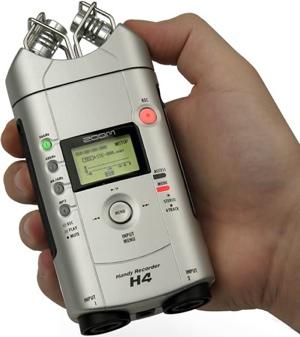I'm a really big fan of the WildeBeat, an audio journal available online, with stories covering wilderness topics. The programs are expertly crafted. Most recently, the WildeBeat covered, in two parts, a series called 'Listening to the Parks'. Steve Sergeant, the show's producer and host, in part 1 encounters a friendly, if not somewhat clueless, RV owner who fires up his secondary generator in the morning so that he can make a cup of coffee. The sound coming from the generator is so loud, Steve can hardly hear himself speak as he approaches the RV owner to talk. It is interesting material, thought provoking. But, what's prompted me to create this entry today is some information contained in part 2 of the series. At about 5 minutes into the clip, Steve and Kurt Fistrup of the National Park Service talk about capturing an 'audio snapshot' of the parks the same way you might take a photograph with a digital camera. I think this is really a terrific idea, and as mentioned in the article, it isn't too difficult to get started.
Just recently I bought an all-in-one stereo recording device. It is called the 'Zoom H4'. At first glance the two end pieces give the device an appearance like a tazer or something, but those pieces are actually two microphones bent in a fashion described as an 'X/Y pattern'. This pattern captures an extraordinary stereo image. I've used it in the field, and then reviewed the recording later in the evening in a semi-silent room. With my eyes closed, the sound generated puts my imagination back at the place I made the recording. The Zoom has a switch on the outside which lets you control the microphone gain, and I've found that the microphones are way too sensitive at the highest setting (+30db). If there is any wind present when the mics are set to high gain, the result is a 'boom, boom, boom' sound even when the foam windscreen is attached -- not too pleasant. I wish the Zoom let you control the input levels on the outside of the device, but to access that setting, you have to click a few buttons and adjust it through the built in software instead. Another key feature which led to my purchase of the Zoom is that you can connect external microphones to the device. This is great. So, if you have a higher end mic, like a shotgun microphone for capturing specific animal sounds, you can plug in right into the back of the unit. Very handy.
Recording is captured as either uncompressed WAV files or as MP3 files, each with selectable frequencies and bit-depths. The files are saved to an SD memory card, which is probably the same type of memory card used in your digital camera. The device runs on two AA batteries, and in my experience so far, when using the device like a digital camera (cycling power on only when taking a 'picture'), they last about the same time as a camera. Unfortunately, there is no battery meter on the device, just a note on the screen that says 'battery low'. For a much more detailed review of the H4, including audio samples, check out this article on oreilly.com. I bought my Zoom for about $300 at B&H Photo/Video. If you get the Zoom, consider also getting a tiny beanbag or tripod to use while recording with the H4. I found a $5 beanbag at Office Depot, originally designed to cradle a cell phone, which is small enough to fit in a pocket and doesn't weigh anything.
One last note about the WildeBeat. If you haven't already heard, the program is now a project of the Earth Island Institute, a 501(c)3 nonprofit corporation. The show is funded through listener donations. I've just become a member. Full membership works out to about $1 an episode, which is worth it to me to support such great work, and ensure that there will be more programs like this down the road! Thanks Steve and Jean.
Website Update: OK, in my last update, I know I said I'd have something to see by now, so I apologize that there isn't anything new to see. Here's what's going on. The goal of the new website is to have a lot of 'community' oriented features. There are lots of sites which provide that feature, but what I've discovered, is that creating all the configurations and code to make it work takes a lot of time. As of right now, the site is 98% ready, and this week I'm having a few different folks check out the site and see that it works OK. The plan as it stands now, is to have the re-launch next Monday, the 25th. I'll keep you posted if things change. Thanks again for your patience.




Comments
I'll probably get a chance to play with this Zoom H4 unit at the Nature Sounds Society's Annual Field Workshop here in Northern California. It'll be interesting to see how it performs against some gear with a more impressive price tag. I've never had good luck myself using recorders which have built-in microphones.
I look forward to hearing some of what you capture with it. Please consider contributing material to the Wildebeat -- we're looking for other story and audio contributors.
Also, thanks again for recognizing our work.